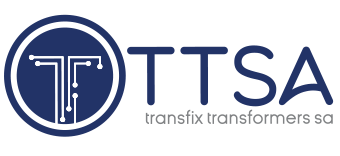Rapidly growing demand in the industrial sector, has seen nitrogen generation equipment supplier Nitralife recently achieving the milestone of having supplied more than 100 customised Nitracut generators to the fabrication and industrial sector over the past four years. “With each new sector and application, we have developed greater expertise and understanding, which has allowed us to offer customers the best and most appropriate technology and solution for their application,” says Nitralife MD Tom Sowry.
Posts
The 13.5 MW, R135-million solar carport project at Ford South Africa’s Silverton assembly plant, in Pretoria, should be completed in the fourth quarter of this year, says Uhuru Energy CEO Mark Kaplan. The project forms part of a larger programme – Project Blue Oval – to develop an integrated renewable-energy solution for the facility, with the aim for the plant to be entirely green and energy self-sufficient by 2024.
Petrochemicals company Shell International and Tokyo-headquartered investment firm Itochu Corporation have agreed to collaborate to accelerate the digitalisation and decarbonisation of Itochu’s mining sites, as well as increase the operational efficiency thereof.
Shell will offer its sectoral expertise in decarbonisation and digitalisation pathways expertise to find solutions that meet the specific needs of Itochu, which manages a metals and minerals portfolio that includes mining sites across the world.
An energy transition aligned with a 1.5°C-compatible climate pathway has net positive effects on job creation, a new report published by the International Renewable Energy Agency (Irena) states. The full ‘World Energy Transitions Outlook’ document shows that under a scenario that limits the global average temperature increase to 1.5°C above preindustrial levels by the end of the century, jobs will exceed those created under a planned energy scenario, or PES, which reflects the current energy plans of governments.
The National Union of Mineworkers (NUM) has welcomed the Gauteng High Court’s ruling to set aside the R8-billion tender between power utility Eskom and oil blender Econ Oil after the matter was heard on June 9.
The court on June 29 found that the contract was unlawful.
South African power utility Eskom Holdings has reduced its debt to less than R400-billion as discussions ensue to secure funding for a transition to renewable energy, Public Enterprises Minister Pravin Gordhan. The state-owned company announced in May it had reduced debt by a fifth to about R401-billion.
Ethekwini, the South African municipality that includes the port city of Durban, plans to seek initial proposals for the construction of 400 MW of power generation. The so-called request for information will be the first by a South African municipal area since the government said last year that cities could buy electricity from providers other than Eskom Holdings, the State utility that’s subjected the country to intermittent outages for over a decade.
South African State power utility Eskom, Africa’s biggest greenhouse-gas emitter, is pitching a $10-billion plan to global lenders that would see it shut the vast majority of its coal-fired plants by 2050 and embrace renewable energy. Discussions have already started with development finance institutions like the World Bank and the African Development Bank, a senior Eskom official told Reuters.
The UK government announced on Wednesday that the phasing out of the use of coal to generate electricity in Great Britain will be brought forward by a full year, to October 2024. (The only coal-fired power plant in Northern Ireland was already scheduled to close by 2024.) This is part of the British government’s programme to decarbonise the country’s electricity supply. To this end, it will introduce new legislation in Parliament as soon as practical. London is also urging all other countries to accelerate their phasing out of the use of coal for electricity generation.
A new learning and innovation hub to develop the skills and knowledge of social-performance practitioners in South Africa’s renewable-energy sector has been officially launched. Known as the Initiative for Social Performance in Renewable Energy, or INSPIRE, the venture aims to improving the effectiveness and sustainability of the enterprise and socioeconomic development initiatives undertaken by independent power producers (IPPs).
INDUSTRY NEWS
- NERSA appoints Electricity Market Advisory Forum to guide power-market reformDecember 19, 2025 - 2:04 pm
- Eskom offers more details on envisaged roles of the NTCSA and the TSODecember 18, 2025 - 11:04 am
- NTCSA says any electricity deal to salvage Mozal must ensure its financial sustainabilityDecember 17, 2025 - 3:01 pm
WHERE TO FIND US
Address
9 Yellow Street
Botshabelo Industrial Area
Botshabelo, Free State
Call / Email Us
Tel: +27 (0) 61 956 6772
Email: info@transfix.co.za
